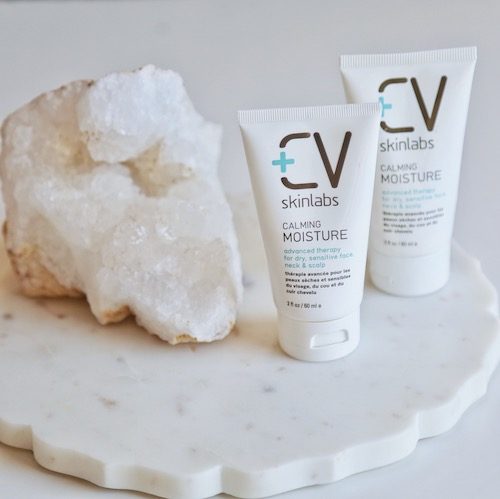Dry, itchy skin is irritating enough in itself.
But if it is the result of diabetes, it can be even more problematic and difficult to control.
That doesn’t mean you can’t enjoy healthier-looking skin. You just need to take a few extra self-care steps as listed below.
What is diabetic dry skin?
Dry skin with diabetes is a consequence of diabetes—a chronic health condition that results in high blood sugar levels.
When you eat and drink, the body absorbs the ingredients in those foods and converts them into energy that your body can use. The body’s preferred form of energy from food is glucose, a form of sugar. Much of what you consume is broken down by the body into glucose.
That glucose then circulates in your bloodstream. When you are healthy, your body releases insulin, a type of hormone that brings glucose to the cells where it is needed.
If you have diabetes, your body doesn’t produce as much insulin as it needs to work, or it can’t use insulin as well as it should. The result is too much glucose in your bloodstream – high blood sugar.
The first step to keeping your skin healthy is to try to keep your diabetes under control. There are many effective treatments for diabetes today that can help you control your blood sugar levels. Without treatment, diabetes can cause long-term health problems such as heart disease, nerve damage and eye problems.
How does diabetes affect the skin?
When blood sugar levels are too high, they can damage all parts of the body, including the skin. High blood sugar levels can cause the skin to lose moisture and dry out, resulting in dryness, itching, flaking and cracking of the skin. The Centers for Disease Control and Prevention (CDC) states that skin changes are one of the most common signs of diabetes.
That’s because the skin is the largest organ in the body and is packed with nerves and blood vessels. Diabetes affects nerves and blood vessels throughout the body, so the effects quickly show up on the skin. Damage to blood vessels and nerves also affects circulation, potentially leading to changes in skin texture, appearance and ability to heal and defend against infections.
Here are some common symptoms of dry skin with diabetes. If you have already been diagnosed with diabetes, these are signs that diabetes is damaging your skin.
Extremely dry, itchy skin
One of the most common symptoms of diabetes that appear on the skin is dryness, which is the result of high blood sugar levels in the blood. This causes the body to lose too much fluid through urination and evaporation through the skin. Poor circulation can also cause persistent itchy skin, especially in the lower legs and feet.
Cracked, flaky skin that leads to infections
People with diabetes are more vulnerable to skin infections. The skin’s outer barrier is compromised, making it easier for microbes such as bacteria to penetrate the skin and cause redness and inflammation.
When the skin is too dry, it can crack and peel. These cracks can increase the risk of infection. Scratching can also create small openings in the skin where skin infections can multiply. Your skin may become irritated quickly and heal slowly.
Shin stains
These are brown spots and sometimes lines that form on the shins, although they can also develop on the arms, thighs and torso. They can look a bit like age spots.
Yellow, reddish or brown spots on your skin
You may initially notice small bumps that resemble pimples. Over time, these bumps will turn into areas of swollen and hard skin.
Dark areas of the skin that feel like velvet
This often occurs in the folds of the neck. A dark spot or velvety band of skin develops, which may be a sign that you have prediabetes.
Hard, thickening skin
This is usually the result of diabetes that has been left untreated for years. The fingers become stiff and a tight, waxy appearance develops on the back of the hand. Hard, swollen skin may also appear on the forearms, upper arms, upper back, shoulders, and neck.
Open sores and wounds
If you have diabetes, you may develop ulcers and open sores on your feet and legs. These are called diabetic ulcers and can take a long time to heal. They are the result of poor circulation and nerve damage caused by diabetes.
Allergic reactions to medications
People with diabetes can have allergic reactions to oral or injectable diabetes medications. Possible symptoms include rash, hives, swelling and redness.
How to Treat Diabetic Dry Skin
The most important thing if you have diabetes is keeping your blood sugar levels under control. Your doctor will help you determine the appropriate medication regimen and diet and exercise activities to control the disease.
However, it is also important to intensify your skin care routine. Understand that your skin is delicate and vulnerable to problems as your body fights this disease. You’re more likely to have skin with a compromised outer barrier, so you need to take steps to help the skin heal and stay strong.
Researchers published a study on skin conditions in diabetes 2023, and they warned: “Skin care, especially foot care, is crucial in diabetes.” They add that lotions and creams can help prevent skin-related complications.
You can do a lot to keep your skin healthy.
What about using our products? CV Skinlabs products are dermatologically recommended and contain clinically proven ingredients to relieve dryness, reduce redness and soothe itching. Our formulas are specially made for people with dry, itchy, irritated, affected skin.

Your skin care routine to soothe dry skin in diabetes
1. Keep your blood sugar levels under control.
Follow your doctor’s instructions to control your blood sugar levels. Keeping your blood sugar levels under control benefits your skin and the rest of your body.
2. Avoid hot water.
Hot water strips the skin of moisture and causes it to dry out. Make it a habit to use lukewarm water when washing and bathing.
3. Use mild cleansers.
Choose mild and gentle soaps that are free of harsh chemicals and heavy fragrances. Wash your skin twice a day, no more if you can help it. Washing too often can worsen dry skin.
4. Moisturize regularly!
Please note that your skin loses moisture faster than normal skin. Get used to applying moisturizer regularly! Apply it after bathing, after washing your hands and before going to bed.
Moisturize at least twice a day – especially your legs and feet (more if you wash regularly), as this will help strengthen your skin’s defenses and promote healing. It also improves the appearance of the skin and smoothes dry, rough patches. If skin is dry and itchy, especially at night, try our Rescue & Relief Spray. It instantly soothes itching and provides soothing, moisturizing relief.
5. Choose a high-quality moisturizer.
Any old moisturizer won’t work. That’s because many of them are made with cheap, chemical ingredients with added fragrances that make them smell nice. Unfortunately, these cheap and synthetic ingredients can further damage your skin and increase its sensitivity.
You need lotions and creams with moisturizing, safe ingredients that will not only hydrate your skin but also help protect it from damage. We recommend our Calming Moisture and Body Repair Lotion for long-lasting relief from extremely dry, itchy, cracked skin. Apply Calming Moisture to your face and neck every morning and evening, and apply Body Repair Lotion to the skin of the rest of your body after bathing and in the evening before going to bed.
Both nourishing products help tame inflammation and reduce itching, while replenishing and soothing dry, irritated skin. They also contain protective antioxidants, anti-inflammatories, ceramides and extracts that promote healing and help strengthen and protect the skin barrier.
6. Avoid dry, cracked skin and treat minor cuts, scrapes and scrapes carefully.
Keeping the skin well hydrated helps prevent cracks that can lead to infections. Dermatologists recommend that people with diabetes check their feet and legs daily. If you notice minor scrapes and cuts, it is important to treat them right away. If you don’t, they can develop into wounds that don’t heal.
To help prevent dry, cracked skin and heels, we recommend our Restorative Skin Balm. It helps retain moisture, instantly soothes dry, cracked skin and protects the skin, while ensuring rapid healing of minor cuts, scrapes and scrapes.
Seek medical attention if you develop a wound that does not heal or worsens.
7. Consider using a humidifier.
If you live in a dry climate, consider putting a humidifier in your bedroom. It adds moisture to the air while you sleep, helping you wake up with more hydrated skin.
Without a humidifier, a dry climate will suck moisture from your skin, making dryness worse.
How do you deal with diabetes-related dry, itchy skin?
Featured image courtesy of Engin Akyurt via Pexels.






